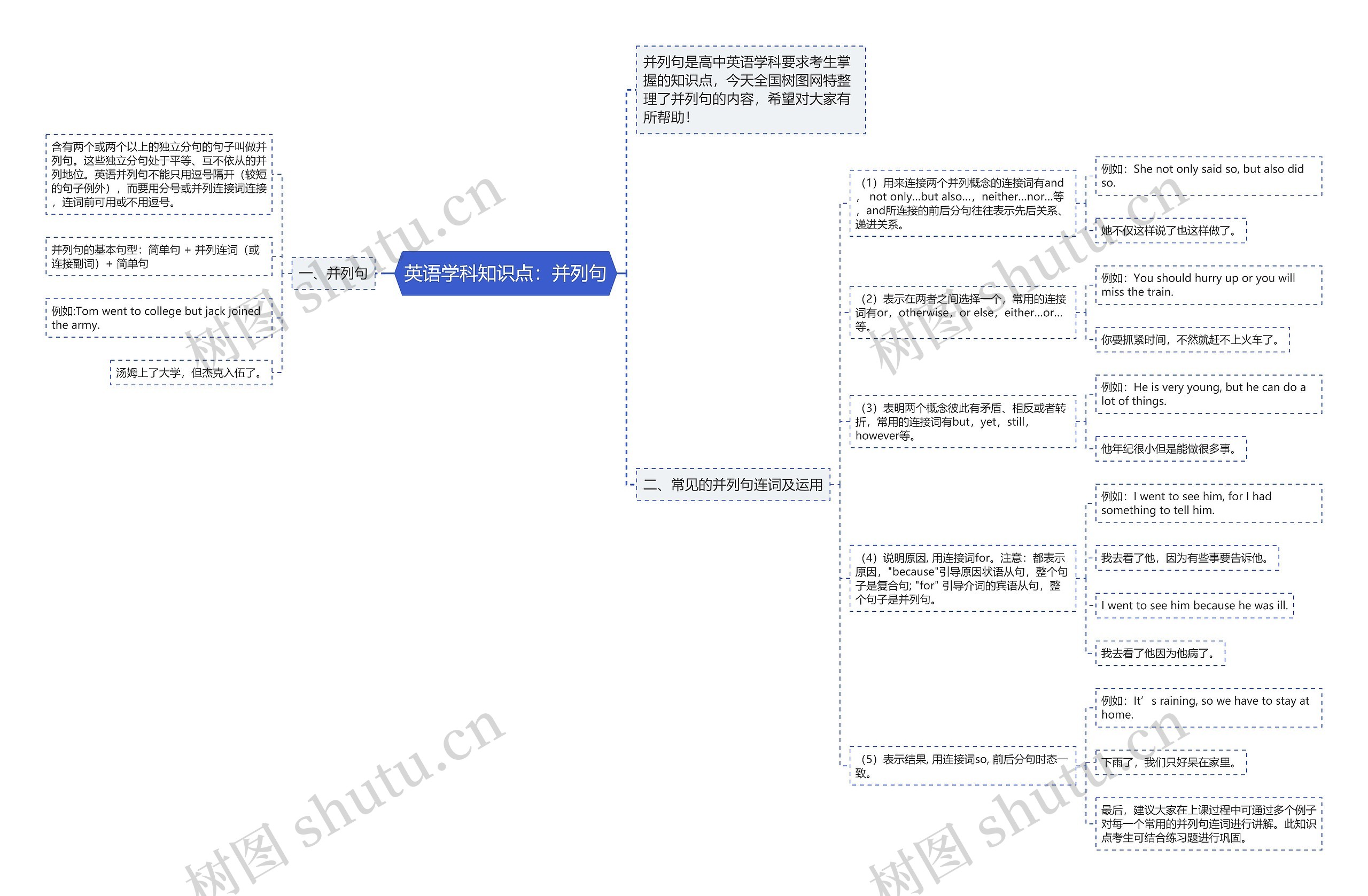英语学科知识点:并列句思维导图
久别情深
2023-04-12

为帮助各位考生掌握英语考点,树图网整理了英语语法—并列句,希望对考生备考有所帮助!
树图思维导图提供《英语学科知识点:并列句》在线思维导图免费制作,点击“编辑”按钮,可对《英语学科知识点:并列句》进行在线思维导图编辑,本思维导图属于思维导图模板主题,文件编号是:407bb5d176ca71c54630225e63a740ed

为帮助各位考生掌握英语考点,树图网整理了英语语法—并列句,希望对考生备考有所帮助!
树图思维导图提供《英语学科知识点:并列句》在线思维导图免费制作,点击“编辑”按钮,可对《英语学科知识点:并列句》进行在线思维导图编辑,本思维导图属于思维导图模板主题,文件编号是:407bb5d176ca71c54630225e63a740ed